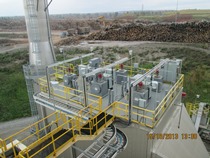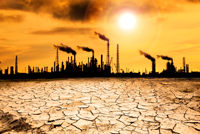A team of scientists will be leaving for Antarctica this week in order to conduct a pollution study.

Gas-fired cogen plants are common, but biomass-fueled plants have the added benefit of using a renewable, practically inexhaustible fuel source.
The Natural Resources Defense Council (NRDC) has launched a crowd-funding campaign to support a new initiative to help schools purchase and install rooftop solar systems that can provide clean, renewable energy.
Various communities in Arizona, Indiana, Michigan, Nebraska, Rhode Island, and South Carolina received $400,000 in grants to help combat water pollution and climate change.
According to the World Health Organization, chronic exposure to high concentrations of these particles increases the risks for cardiovascular and repository diseases, as well as lung cancer.

Environment News Service reported yesterday the U.S. Supreme Court will review an appeals court ruling that unanimously upheld the Environmental Protection Agency’s (EPA) right to regulate greenhouse gases emitted from power plants and factories. The legal action was brought by the Utility Air Regulatory Group, a power company trade association, and the attorney generals of 13 states.
The EPA administrator and secretary of energy will participate in a White House Google+ Hangout starting at 12:15 p.m. EDT.
Scientists used satellite data and climate model to dispel prior assumptions that Antartic ice melt caused primarily from iceberg calving.
A levee protecting 1.5 miles of Lower Manhattan from the kind of damage caused by Hurricane Sandy is central to the plan.

An enterprise-level Environmental Management System significantly enhanced its ability to maintain compliance with government regulations, as well as voluntary sustainability reporting initiatives.
Dr. Louis W. Uccellini, NWS director, calls the more than doubled computing capacity "a game-changer for the entire public and private weather industry."

Coastal communities need to know just how vulnerable they are to sea level rise. Once they understand the risks, they are in a better position to develop strategic solutions. Battelle, for example, has conducted such assessments on behalf of the U.S. Department of Defense to determine regional vulnerabilities in areas where the U.S. Navy has a strong presence.
Advanced plastic cooling towers help ensure reliability of solar-powered cooling project and water treatment plant in Middle East.
In a letter from Sierra Club and ForestEthics, nearly 60 organizations are asking U.S. corporations to stop using tar sands.
A new program allows Americans to see the impacts of climate change in gardens and the many things that are being done to help prevent or prepare for it.
For the third-annual SXSW Eco, Robin Chase, founder and CEO of Buzzcar and former CEO of ZipCar has been added as the keynote speaker for the event.
As the price of energy rises, so do the stakes. To document the country’s dependency on fossil fuels and extraction methods that contribute to global warming, a three-month cross-country road trip has been launched by AlterNet.
In a new study, researchers are assessing the life cycle of batteries in order to find ways to reduce global warming emissions and address nanotechnology innovations that could improve the overall performance of the batteries.
The AMS will assemble leading members of the climate science and finance communities on June 3-4, 2013 in Washington D.C. to explore climate information needs for financial decision-making.